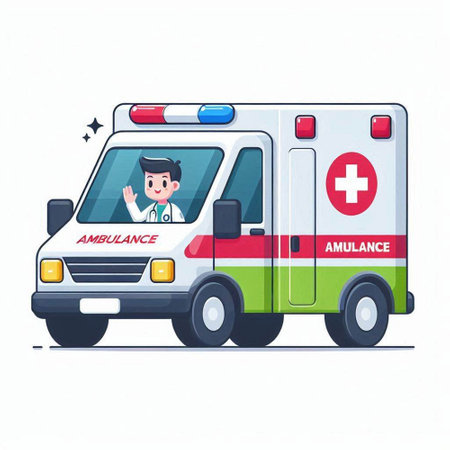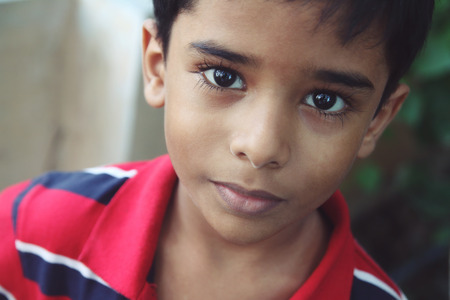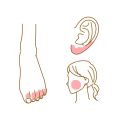Understanding Eczema in Indian Children
Eczema, medically known as atopic dermatitis, is a chronic skin condition that causes intense itching, redness, and inflammation. While eczema affects children globally, its prevalence among Indian kids is steadily rising due to various environmental and lifestyle factors unique to India. In recent years, paediatric dermatologists across cities like Mumbai, Delhi, Chennai, and Kolkata have observed an uptick in the number of young patients presenting with eczema symptoms. This trend can be attributed not only to genetic predispositions but also to India’s diverse climate conditions—ranging from humid coastal regions to dry northern plains—which play a significant role in aggravating or alleviating eczema flare-ups. Air pollution levels in metropolitan areas, hard water usage in certain states, exposure to dust mites, and even traditional clothing fabrics such as synthetics or wool further complicate skin health for Indian children. As families move between rural and urban settings or adapt to changing weather patterns, the triggers for eczema often shift too. Understanding these local nuances is essential for parents and caregivers to identify early signs of eczema and take proactive measures tailored for Indian children’s needs.
2. Identifying Symptoms: Skin Issues Indian Parents Should Look For
For many Indian parents, recognising eczema (also called atopic dermatitis) in children can be confusing, especially because the signs may look different on brown skin compared to fairer skin tones. Early identification is crucial for effective management and to provide comfort to your child. Based on real experiences from Indian families, here’s what you should watch out for:
Common Signs and Symptoms of Eczema in Indian Kids
| Symptom | Description on Brown Skin | Indian Family Experiences |
|---|---|---|
| Itching | Persistent and intense itching, often worse at night. | “My son kept scratching his arms and legs, even during his sleep,” shares Mrs. Rao from Hyderabad. |
| Dryness & Rough Patches | Patches may appear greyish, ashy, or darker than surrounding skin; sometimes thickened over time. | “We thought it was just dryness due to Delhi winters, but moisturisers didn’t help,” says Mr. Patel from Ahmedabad. |
| Redness or Discolouration | Instead of bright red, affected areas may look purplish, dark brown, or even slightly bluish on Indian skin. | “We noticed odd dark marks behind my daughters knees that wouldnt fade,” says Mrs. Singh from Amritsar. |
| Small Bumps or Blisters | Tiny raised bumps that may ooze fluid if scratched; these can blend with the natural skin tone, making them harder to spot. | “Little bumps on the elbows looked like mosquito bites at first,” recalls Mr. Menon from Kochi. |
| Lichenification | Skin becomes thickened and leathery due to repeated scratching; appears darker and rougher in texture. | “After months of itching, my sons neck became so dark and rough,” reports Mrs. Sharma from Jaipur. |
Areas Commonly Affected in Indian Children
- Face (especially cheeks and around the mouth)
- Folds of arms and legs (elbow and knee creases)
- Neck and ankles
- Wrists and hands – often worsened by frequent washing or exposure to detergents used in Indian homes
The Importance of Timely Recognition
Eczema is often mistaken for allergies or heat rashes (“garmi ka daana” in Hindi) in Indian households. If you notice persistent dryness, unusual darkening, or your child complains frequently of itching—even if there are no classic ‘red’ rashes—it is wise to consult a paediatrician or dermatologist familiar with Indian skin types. Early intervention can prevent infections and scarring, bringing relief not just to your child but to the entire family.

3. Common Triggers in Indian Lifestyle
When it comes to eczema in Indian children, understanding the common triggers rooted in daily life is crucial for effective management. The unique blend of India’s climate, food habits, and cultural practices can all play a significant role in aggravating eczema symptoms. First, the Indian climate itself presents challenges—hot, humid summers and dry winters can both trigger flare-ups. Excessive sweating during peak summer months or exposure to dust during dry spells often irritate sensitive skin.
Dietary habits are another important factor. Many Indian families love spicy, oily, and tangy foods, which are deeply embedded in our culture. While these dishes are delicious, certain spices and preservatives may act as allergens for some children, causing their eczema to worsen. Additionally, dairy products and nuts, staples in many Indian households, can also be problematic for kids with specific sensitivities.
Cultural clothing choices also matter. Traditional outfits like synthetic sarees, salwar kameez with embroidery, or tight-fitting uniforms can trap heat and sweat against the skin or cause friction, making eczema-prone areas more vulnerable. Cotton fabrics are generally recommended as they allow the skin to breathe and reduce irritation.
Beyond these physical factors, cultural routines such as frequent oil massages—a beloved practice for newborns and toddlers—may not suit every child. Some oils can clog pores or trigger allergic reactions if the child’s skin is already sensitive.
In essence, being mindful of these typical Indian lifestyle triggers—climate changes, dietary preferences, traditional attire, and cultural skincare routines—can help parents identify what may be impacting their childs eczema. Small adjustments and close observation often make a significant difference in controlling flare-ups and improving overall skin health for Indian children.
4. Home Remedies: What Works and What Doesn’t
When it comes to eczema in Indian children, most families reach for time-tested home remedies before heading to the doctor. Growing up in a typical Indian household, I remember my grandmother applying coconut oil on my cousin’s itchy patches, or making a turmeric paste when someone had a skin rash. But how effective are these remedies really? Let’s take a closer look at some of the most commonly used solutions in Indian homes and what science says about them.
Coconut Oil: A Trusted Saviour?
Coconut oil is almost a staple in every South Asian kitchen and medicine cabinet. Parents love its soothing, cooling effect on irritated skin. Some studies suggest that virgin coconut oil has anti-inflammatory and moisturising properties, which can help reduce eczema symptoms. However, not all children respond equally well. It’s important to make sure the child isn’t allergic to coconut products before regular use.
Neem: The Bitter Healer
Neem (Azadirachta indica) leaves and oil are celebrated in Ayurveda for their antibacterial and antifungal effects. Many parents bathe their kids with neem water or apply diluted neem oil to affected areas. While neem does have antimicrobial qualities, scientific research on its direct effect on eczema is limited. Overuse or concentrated application can sometimes irritate sensitive skin even more.
Turmeric: Golden Spice, Mixed Results
From haldi doodh (turmeric milk) to topical pastes, turmeric is another household remedy. Its active compound, curcumin, has anti-inflammatory properties. There is anecdotal evidence of reduced redness and itching after using turmeric paste, but some children might experience stinging or an allergy to it.
Comparing Popular Indian Home Remedies for Eczema
| Remedy | How Its Used | Potential Benefits | Cautions/Evidence |
|---|---|---|---|
| Coconut Oil | Applied directly to skin; as a massage oil after bath | Moisturises, soothes irritation; mild anti-inflammatory effect | Can cause allergies in some; backed by limited scientific studies |
| Neem | Baths with neem water; diluted neem oil applied topically | Antibacterial and antifungal properties; traditional use for skin problems | Can irritate sensitive skin; lack of robust evidence for eczema specifically |
| Turmeric | Pastes applied to skin; consumed with milk or food | Anti-inflammatory action; may reduce redness/itchiness | Possible allergic reactions; mixed scientific support for topical use in eczema |
What Should Parents Do?
If you’re considering home remedies for your child’s eczema, always do a patch test first and observe closely for any signs of worsening. While many of these ingredients are safe for most children, they are not substitutes for prescribed medications if the eczema is moderate or severe. Consult your paediatrician or dermatologist before introducing any new treatment—natural doesn’t always mean risk-free, especially for delicate baby skin.
5. Medical Treatment Options Available in India
Overview of Effective Treatments for Eczema in Indian Children
Managing eczema in children requires a holistic approach, and the availability of effective medical treatments in India has improved significantly over the years. For Indian families, understanding local treatment options is essential to ensure timely and proper care for their little ones.
Recommended Dermatologists Across India
India boasts a growing network of highly qualified dermatologists who specialise in paediatric skin conditions like eczema. Major cities such as Mumbai, Delhi, Bengaluru, Hyderabad, and Chennai have reputable hospitals and private clinics where parents can consult with experienced skin specialists. Institutions like AIIMS (Delhi), Apollo Hospitals, and Manipal Hospitals are known for their paediatric dermatology departments. In smaller towns, government hospitals and local practitioners often offer affordable consultations, but it’s advisable to seek referrals or check hospital accreditations before starting any treatment.
Availability of Medicines and Prescriptions
The Indian pharmaceutical market offers a wide range of topical corticosteroids, emollients, antihistamines, and newer non-steroidal creams suitable for managing eczema symptoms in children. Many of these medicines are available at local chemists or through online pharmacies like 1mg and Netmeds. However, some advanced biologic therapies or imported creams might only be accessible through specialist doctors or large hospital pharmacies. It’s important for parents to follow the prescribed dosage and application instructions closely, as misuse can lead to side effects or reduced effectiveness.
Insurance Coverage and Financial Considerations
With rising healthcare costs, insurance coverage for chronic conditions like eczema is gaining importance among Indian families. Many health insurance policies now include outpatient consultations and prescribed medicines for children with chronic illnesses, including skin disorders. Schemes like Ayushman Bharat also provide basic healthcare support for underprivileged families. Parents are encouraged to review their policy details carefully to understand inclusions, exclusions, and claim procedures related to eczema treatments.
Personal Experience: Navigating Treatment Options
As an Indian parent navigating my child’s eczema journey, I learned that staying informed about available treatments and consulting reputed dermatologists made a significant difference. Accessing medicines was generally straightforward in metro cities but required more planning when travelling to our hometown. Insurance played a crucial role in reducing financial stress during multiple follow-ups. Ultimately, being proactive and seeking community recommendations helped us find trustworthy care for our child’s sensitive skin.
6. Special Care and Daily Routines for Indian Kids
Taking care of a child with eczema in India requires a thoughtful approach that fits into our unique climate, traditions, and daily habits. With the right routines and choices, you can help your child feel comfortable and minimise flare-ups.
Gentle Skincare Routines
Indian summers can be hot and humid, while winters are often dry. Use mild, fragrance-free cleansers instead of regular soaps to avoid irritation. Apply a thick moisturiser immediately after bathing—look for options with coconut oil or shea butter, both commonly available in Indian markets. If you use traditional home remedies like aloe vera gel or coconut oil, always patch-test on a small area first to make sure it does not irritate your child’s skin.
Bathing Practices
Avoid hot water baths as they can dry out the skin further. Instead, give short (5–10 minute) lukewarm baths using a soft towel for gentle patting. In many Indian households, children bathe twice a day especially during summer; if so, ensure you apply moisturiser after every bath to lock in moisture. Add a few drops of coconut oil to the bath water for extra hydration if recommended by your dermatologist.
Clothing Choices Suitable for India
Dressing your child in the right clothes is crucial, especially considering the heat and dust in many parts of India. Choose loose-fitting cotton clothing that allows air circulation and absorbs sweat. Avoid synthetic fabrics like polyester, which can trap heat and cause itching. During festivals or special occasions where traditional wear is preferred, opt for softer cotton kurtas or salwar kameez with minimal embroidery on areas that touch the skin directly.
Daily Habits That Make a Difference
Keep your child’s nails trimmed short to reduce damage from scratching. Encourage them to wash their hands frequently but gently, using mild soap alternatives. On dusty days or during outdoor play, remind them to change clothes and wash exposed skin soon after coming indoors. It is also wise to avoid strong detergents when washing their clothes—use gentle, fragrance-free laundry powders instead.
Involving Family & School
Share information about your child’s condition with family members and teachers so they understand why certain routines are important. This will help create an environment of support and understanding at home and school—a crucial part of managing eczema in Indian families.
7. Coping, Support, and Community Resources
Building a Strong Support Network
Living with eczema can be emotionally challenging for children and their families. In India, where family bonds are strong, it is important to build a support network that includes parents, grandparents, teachers, and even neighbours. By sharing the child’s needs openly with trusted adults, you can create an environment where your child feels understood and accepted. Support from other parents who have gone through similar experiences is invaluable in helping you cope with daily challenges.
Real Stories: Learning from Other Families
Many Indian families have shared their journeys of managing childhood eczema. For example, Priya from Chennai recounts how her son struggled with itching and embarrassment at school. After connecting with another mother in her apartment complex whose daughter also had eczema, they started exchanging home remedies like coconut oil massage and tips for handling triggers during festivals or hot summer days. These real-life stories not only provide comfort but also practical advice that fits into our Indian lifestyle.
Support Groups and NGOs in India
If you feel isolated or overwhelmed, remember that you are not alone. Across India, there are several NGOs and online communities dedicated to skin health and paediatric care:
- The Indian Association of Dermatologists, Venereologists & Leprologists (IADVL): They frequently run awareness camps and offer resources for parents managing eczema.
- The Eczema Society of India: This organisation provides information in multiple Indian languages, conducts workshops, and has an active online forum for parent discussions.
- Local Facebook or WhatsApp Groups: Many parents have formed city-based groups in Delhi, Mumbai, Bangalore, and Kolkata where they share doctors’ contacts, product reviews (like gentle soaps or ayurvedic oils), and emotional support.
How to Find Help
You can reach out to your child’s paediatrician or dermatologist for recommendations on nearby support groups. Many hospitals in big cities now have patient counsellors who guide parents to community resources. Don’t hesitate to ask your child’s school if they are aware of any local initiatives or expert talks on eczema management.
The Power of Community
Coping with eczema is not just about medical treatment—it is about finding strength in community. Whether it’s learning from another parent’s story or getting advice from an NGO, remember that sharing experiences reduces stress and brings hope. Let us embrace our Indian tradition of caring for each other by building networks that empower our children to thrive despite eczema.


